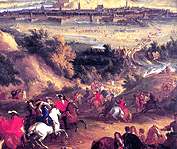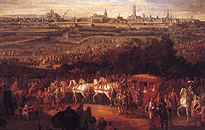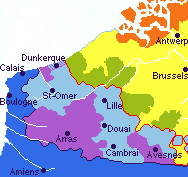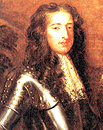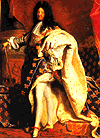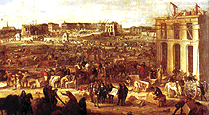|
|
|
|
King Louis XIV 1638 - 1715 |
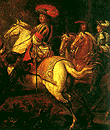 Louis XIV wearing his famous red-plumed hat in battle near the Bruges canal 1667  young Louis XIV's mistress, Louise de Vallière, 1663 |
Longest reigning French king Pursuit of Glory Flattered |
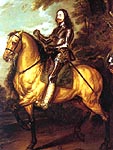 Charles I reigned 1625 - 1649 - another royal portrait on horseback. A generation before Louis XIV, Charles' also believed in the "divine right of kings" to rule. But his attempt to establish an all-powerful monarchy across the channel failed. It led to the English Civil War, Charles I lost his throne and was beheaded. |
|
Devastation of siege
warfare |
|
|
|
Early success |
|
French expansion into the Spanish Netherlands |
|
|
Timeline- Louis XIV 1638 - born |
|
||||||||||||||||||
|
|
|
The Palace of Versailles - a fatal
extravagance? |
|
|
Patron of the Arts On several days a week, Versailles was open to the public - who could wander in and admire the finest works of art in Europe, and stand and stare at the king's family having supper. Crowds came out from Paris. Entry was free, provided you were decently dressed. Fashion demanded you wore a sword, which could be hired at the gate. Verdict of History |
 Young Louis XIV sheltered Charles I's son when he escaped
into exile. After Charles II regained the English throne in
1660, he was constantly short of money. The wealthy and
powerful French king gave weak Charles big subsidies.
Charles II fought the Dutch: he siezed their American colony
of New Amsterdam and called it New York; they burnt his
fleet in the Medway. Meanwhile Louis conquered Flanders. In
England, many suspected Charles II of trying to restore
Roman Catholicism. They were right: in 1670, he signed a
secret Treaty of Dover with Louis XIV, but could not make it
happen.
Young Louis XIV sheltered Charles I's son when he escaped
into exile. After Charles II regained the English throne in
1660, he was constantly short of money. The wealthy and
powerful French king gave weak Charles big subsidies.
Charles II fought the Dutch: he siezed their American colony
of New Amsterdam and called it New York; they burnt his
fleet in the Medway. Meanwhile Louis conquered Flanders. In
England, many suspected Charles II of trying to restore
Roman Catholicism. They were right: in 1670, he signed a
secret Treaty of Dover with Louis XIV, but could not make it
happen. |
|
Places to
visit: |
|
|||
|
Related background
information |
|
|
|
|
|


